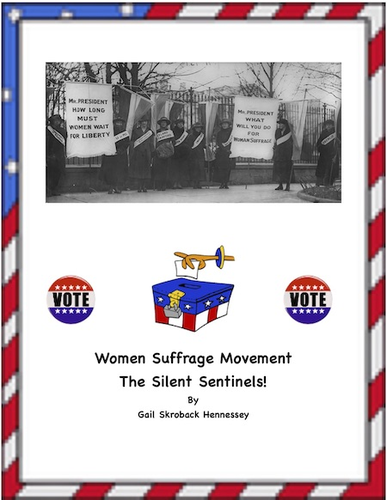


In January 9, 1917, a group of suffragettes, called the National Woman’s Party, led by Alice Paul, went to the White House to see President Woodrow Wilson. They hoped to get the president’s support for woman to have the right to vote. Unfortunately, he refused to support women’s suffrage. He believed it was a state issue and not a federal one. The next day, January 10, 1917, the group decided to protest, standing outside 12 different sections around the White House. The women felt that the President would be forced to see them any time he left or returned to the White House. Rain or shine, warm or frigid temperatures, the women silently stood, holding banners and signs. Some of the women got frost bite. Holding banners for hours caused arms to ache.The woman got the nickname “Silent Sentinels”.
This reading shares with students how women persisted in their quest to get the right to vote. It certainly wasn’t easy! They were met with much resistance and were even jailed.
The reading passage includes comprehension questions and extension activities.
Great for study on women suffrage and especially in 2020 for the 100th anniversary of the ratification of the 19th amendment.
Possible Additional Resources of Interest on this topic:
- Reader’s Theater Script on Susan B. Anthony. Part of my Ms. Bie Ografee Talk Show Series.
- Webquest on Famous Women in History:
- TEN Reading Passages on famous Women in History:
4.TEN Reader’s Theater Scripts on famous Women in History: - The Road to Women’s Suffrage: The CrossCountry Road Trip of Nell Richardson and Alice Burke:
Get this resource as part of a bundle and save up to 6%
A bundle is a package of resources grouped together to teach a particular topic, or a series of lessons, in one place.
Something went wrong, please try again later.
This resource hasn't been reviewed yet
To ensure quality for our reviews, only customers who have purchased this resource can review it
Report this resourceto let us know if it violates our terms and conditions.
Our customer service team will review your report and will be in touch.